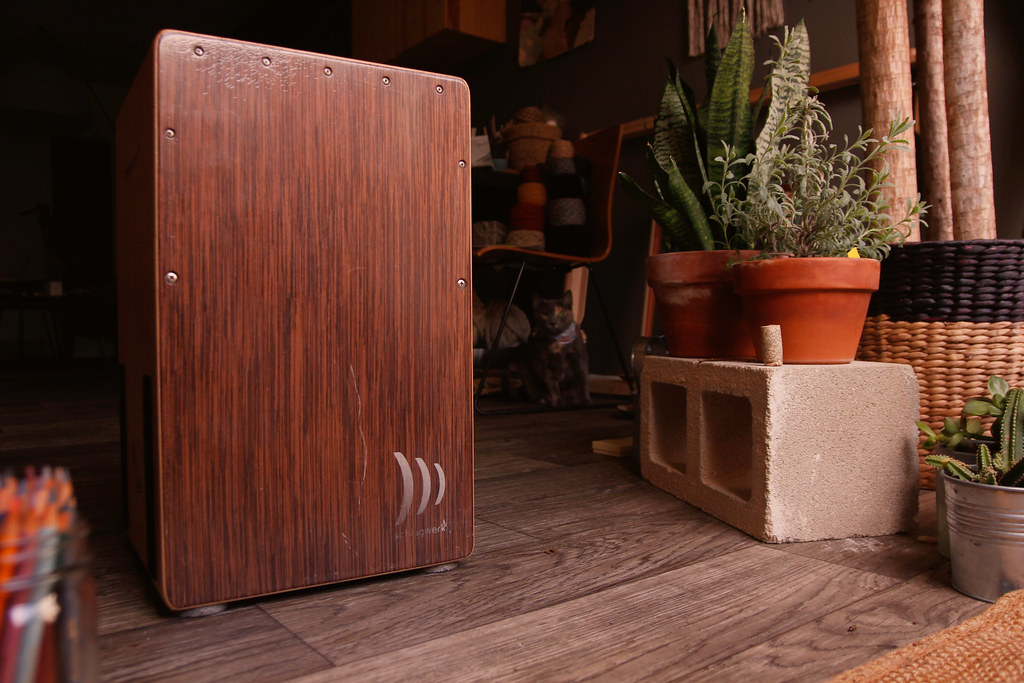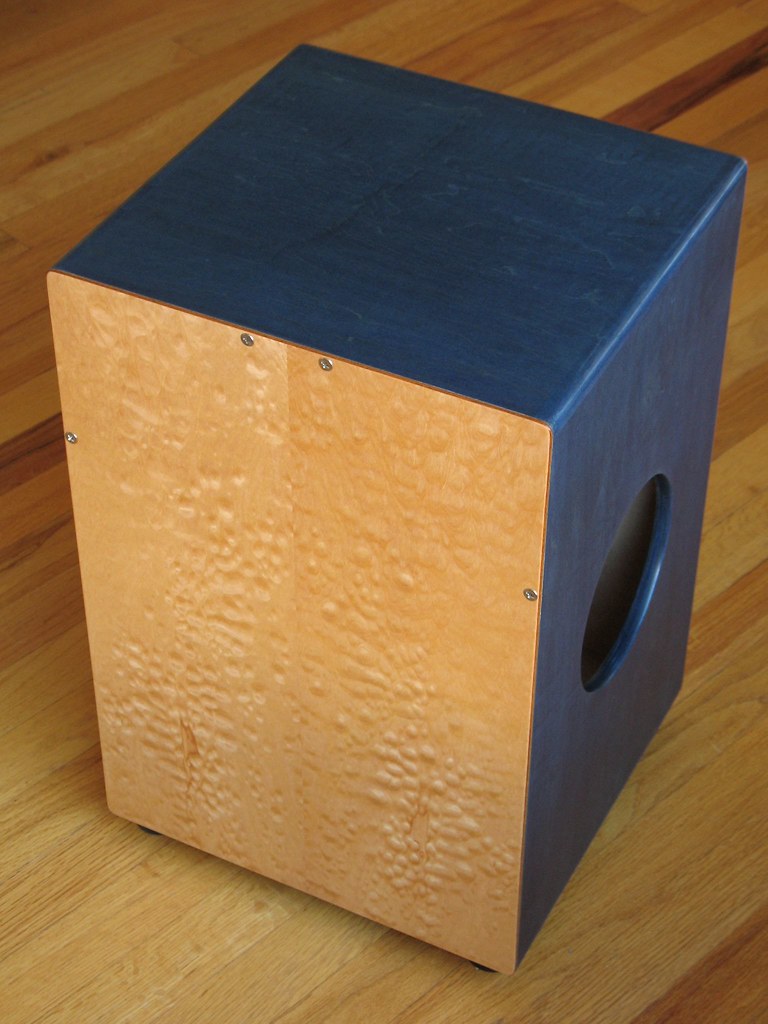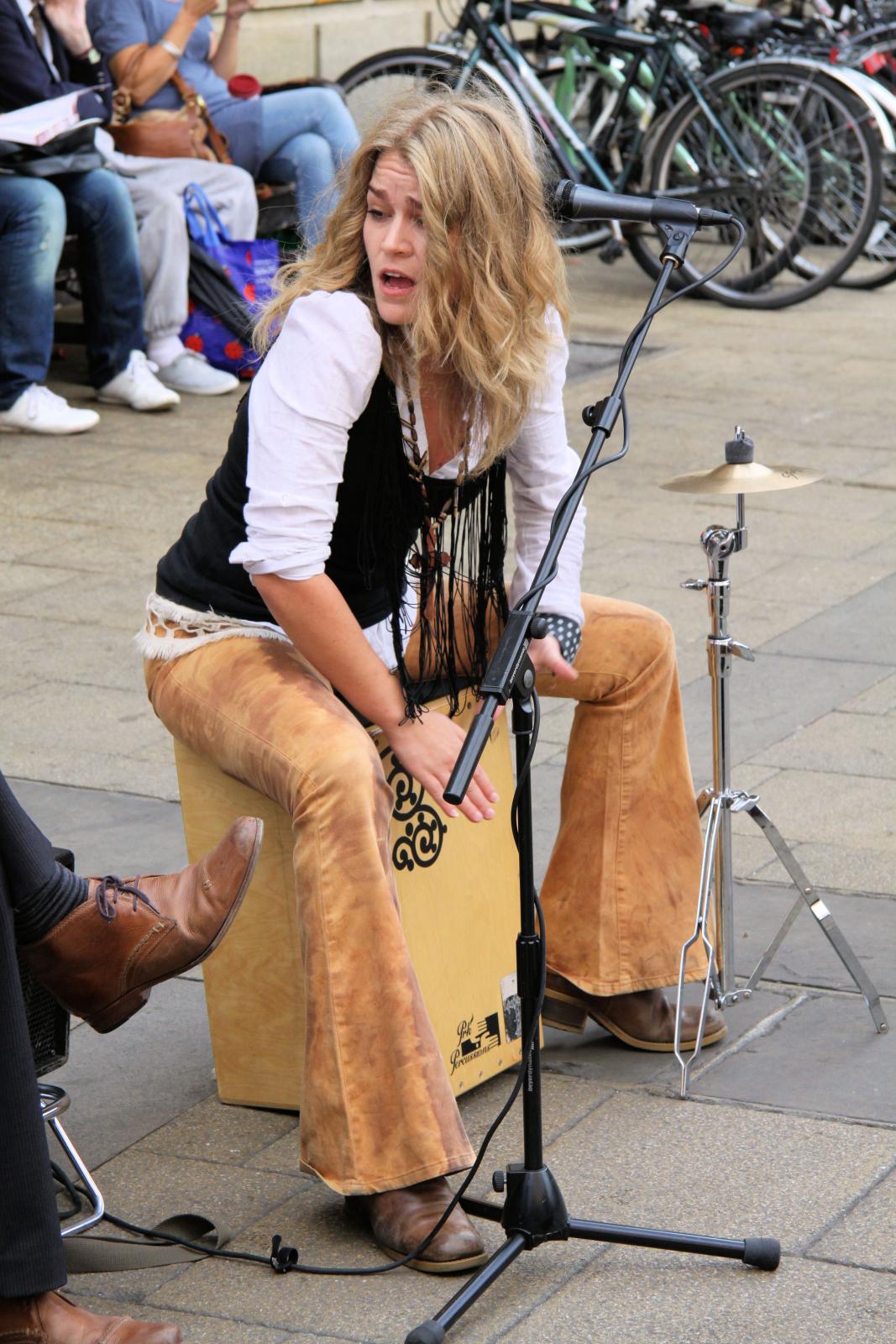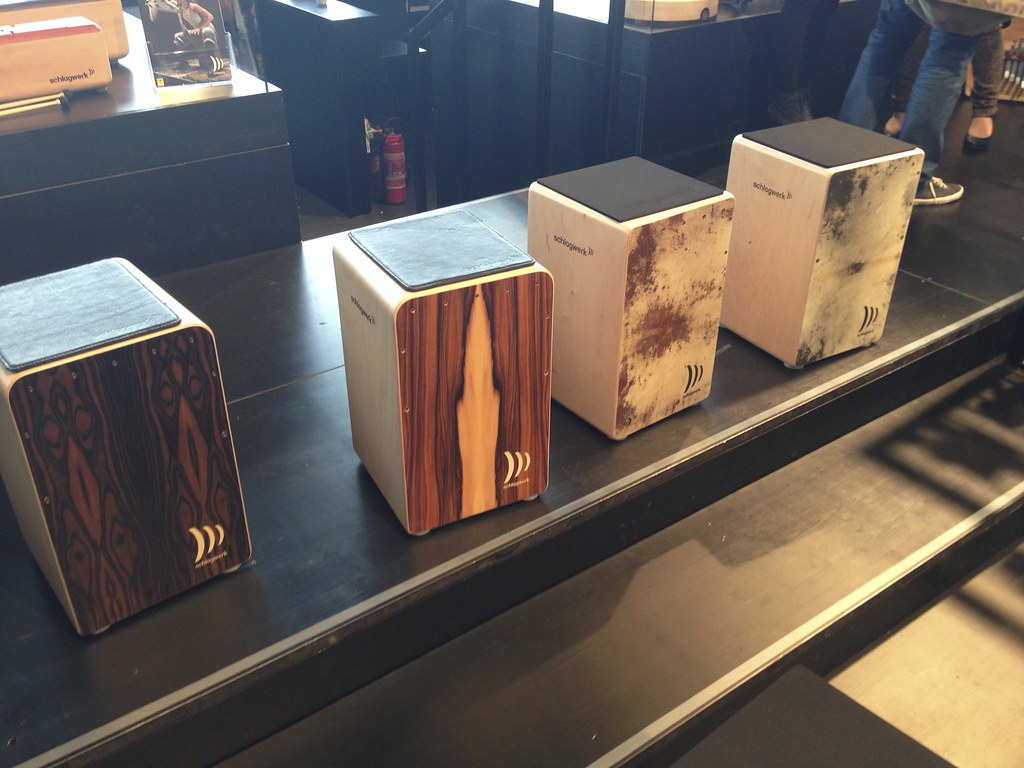
A cajon is a percussion instrument that originated in Peru and is widely used in Afro-Peruvian music, flamenco, and other genres. It is essentially a wooden box that the player sits on while playing, with a sound hole in the back or side, and often has snare wires inside to give a snappy sound.
To play the cajon, the player usually sits on the top surface of the instrument, with the front surface facing forward, and uses their hands to strike and slap various parts of the front surface to create different sounds and rhythms. The player can produce a variety of tones and textures, depending on where and how they strike the cajon, and can create complex rhythms and beats by combining different techniques.
Cajons have become increasingly popular in modern music, and are used in a wide range of genres such as acoustic rock, world music, jazz, and pop. They are often used as a substitute for a drum kit, as they can provide a similar range of percussive sounds in a more compact and portable form.

Cajons have gained popularity in recent years for a number of reasons. One reason is their versatility; cajons can be used in a variety of musical styles, and they can be played by drummers and non-drummers alike. Additionally, cajons are relatively inexpensive and portable, making them a popular choice for musicians who need to travel or perform in small venues.
One advantage of cajons over drum sets is their size and portability. Cajons are typically smaller and lighter than drum sets, which makes them easier to transport and set up. They also have a smaller footprint on stage, which can be an advantage in cramped or intimate performance spaces. Cajons can also produce a range of percussive sounds that can approximate the sounds of a drum set, without requiring as many individual pieces or as much space. However, cajons typically have a limited range of sounds compared to drum sets, which can make it difficult to replicate certain drum patterns or rhythms.
Cajons appeal to a wide range of musicians, from percussionists and drummers to guitarists, singers, and songwriters. They are especially popular in acoustic and unplugged settings, where their unique sound and portability can be particularly valuable. Cajons are also commonly used in world music, folk music, and other genres that prioritize live performance and audience engagement.

Price
The price of a cajon can depend on several factors, including the materials used, the level of craftsmanship involved in its construction, and the brand or manufacturer. Here are some common factors that can contribute to the price of a cajon:
- Materials: The type and quality of wood used for the cajon can have a significant impact on its price. Higher-end cajons are often made from hardwoods such as oak, maple, or birch, which are more durable and offer better sound quality than lower-end cajons made from softer woods like plywood. In addition, some cajons may feature high-quality snare wires or other components that can increase the price.
- Craftsmanship: The level of craftsmanship involved in making a cajon can also affect its price. A higher-end cajon may be made by hand and feature intricate design details or special features like adjustable snare wires, which can add to the cost. A lower-end cajon may be mass-produced and have less attention paid to its construction and finish.
- Brand or manufacturer: The reputation of the brand or manufacturer can also play a role in the price of a cajon. Established brands with a strong reputation for quality may charge more for their instruments, while lesser-known brands or manufacturers may offer lower-priced alternatives.

Different kinds of Cajons
There are many different kinds of cajons, each with its own unique sound and features. Here are some common types of cajons:
-
- Peruvian cajon: The Peruvian cajon is the traditional cajon, originating in Peru in the late 18th century. It is typically made from a single piece of hardwood and features a thin striking surface, which produces a clear, resonant sound. Peruvian cajons are often played with bare hands.
- Flamenco cajon: The Flamenco cajon is a type of cajon that has been modified to suit the needs of Flamenco music. It is typically larger than the Peruvian cajon and features a thicker striking surface and adjustable snare wires, which give it a brighter, more percussive sound. Flamenco cajons are often played with brushes or sticks.
- Box cajon: The box cajon is a type of cajon that is often used in contemporary music. It is typically made from plywood and features a thicker striking surface than the Peruvian cajon. Box cajons may also have adjustable snare wires or other features that allow for a range of percussive sounds. They are often played with bare hands or with sticks.
- Bass cajon: The bass cajon is a type of cajon that is designed to produce a deep, booming bass sound. It typically has a larger size and a thicker striking surface than other types of cajons, and may feature additional sound holes or ports to enhance the low-end frequencies. Bass cajons are often played with bare hands or with mallets.
- Electronic cajon: The electronic cajon is a type of cajon that features built-in electronics and amplification. It may include a range of digital sound samples and effects, and can be used to produce a variety of percussion sounds. Electronic cajons are often used in electronic or experimental music.










































































































